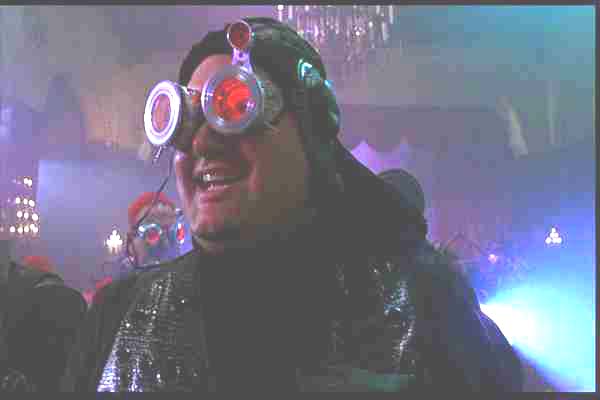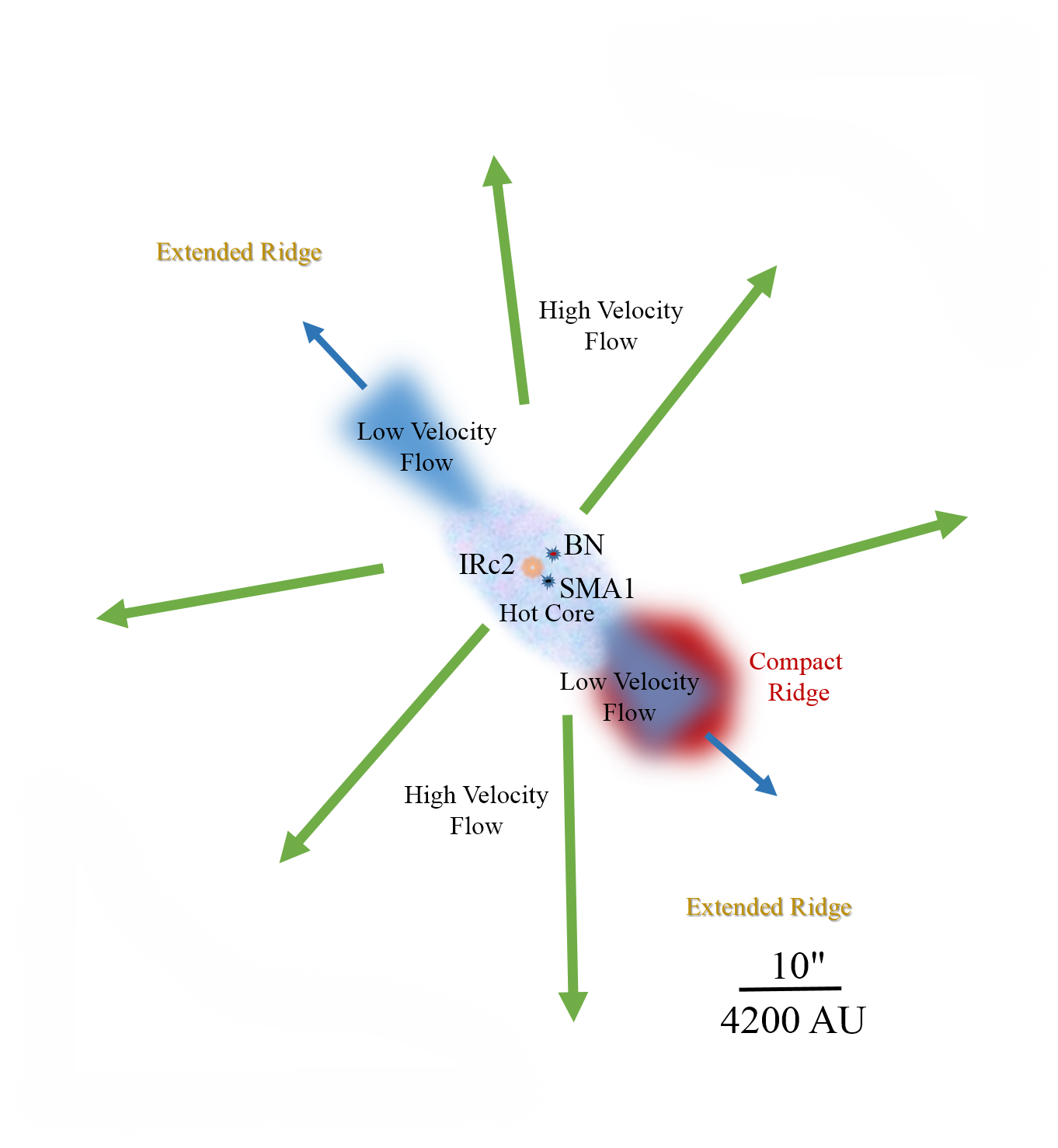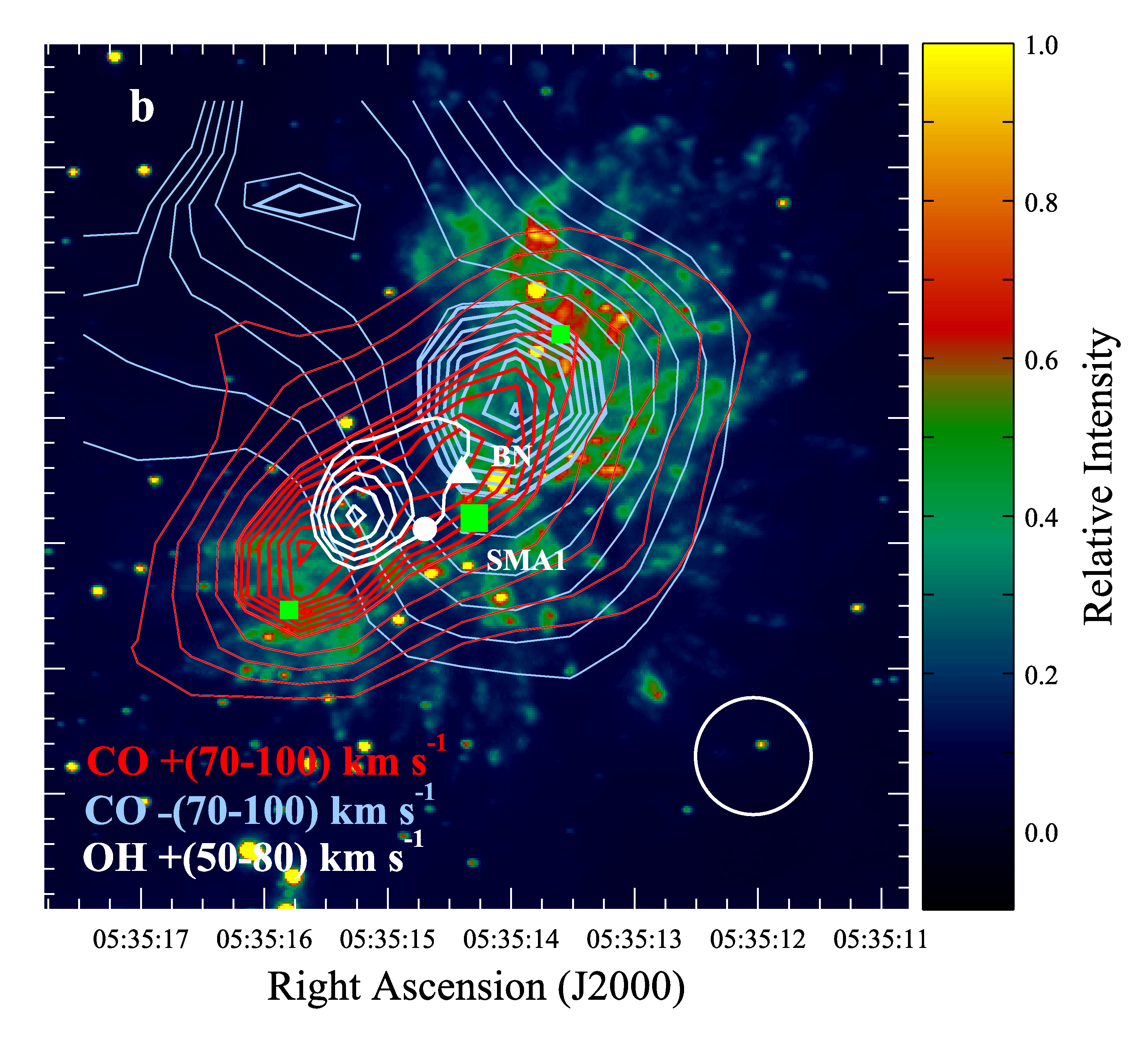 |
 |
 |
 |
IPAC Science Home |
 |
 |
 |
 |
 |
 |
Caltech Research
|
 |
 |
 |
 |
 |
 |
JPL Research
|
 |
 |
 |
 |
 |
 |
My Current Research
Projects
|
 |
 |
|
|
WR Rings:
Infrared observations of Hot Star Winds
and Circumstellar Nebulae |
 |
|
|
HEXOS: Herschel/HIFI Observations
of EXtraOrdinary Sources: The Orion
and Sagittarius B2 Starforming
Regions.
|
 |
|
|
Carbon
Chemistry in Orion KL:
Mapping
of C+ , CH+,
CH, CH3OH |
 |
|
|
Wolf-Rayet
"Red Eyes" Search: Discovering
rare hidden massive  stars by their
infrared colors and spectroscopy stars by their
infrared colors and spectroscopy
|
|
 |
|
|
Luminous
Blue Variable eta Carina's far infrared
gas and dust with Herschel
|
 |
 |
 |
 |
 |
Links |
 |
 |
 |
|
 |
 |
|
 |
 |
 |
The simplest
C-bearing molecules CH, CH +,
and CN were the first molecules of
any kind discovered in the ISM, over
75 years ago, through their
absorption lines at optical
wavelengths. With a strong
source of continuum emission in the
background (a star-forming region
with thermal emission from heated
dust, for example), and today's
instrumentation, the electronic
transitions are readily observed in
the optical and UV.
They each also have rotational
states associated with the ground
electronic states --- in fact it was
such a rotational transition between
j = 1 and j = 2 electronic states of
CN that lead astronomers to suspect
some background radiation which is
populating the j = 1 level,
with a rotational energy of 2.3 K
from the j = 0 level. This was
the first indication of a widespread
background radiation field, although
they didn't know its cosmic
origin... it would be another 25
years before the 2.7 K CMB was
discovered by Penzias & Wilson.
The CH + ion also caused
head scratching up until recently,
since it is observed in much higher
abundances than expected for an
equilibrium chemistry that should
apply to the ISM. It is very
reactive, so it is not enough to
simply ionize CH, which is usually
observed in normal (steady-state)
abundances in dense (star-forming)
regions, while CH + is at
much lower densities. Also,
combining C + with neutral
H has much too low a reaction rate
at normal ISM and molecular cloud
temperatures.
The most efficient way to produce CH +
is to get C + to react
with H2:

Shocks
and/or PDRs?
The above
reaction is highly endothermic,
so catching it in the act
requires an energetic
environment, with an energy
input of ~4300 K (~0.3 eV),
i.e., a reservoir of vibrationally-excited
H2. While quite atypical
of normal ISM temperatures,
excited H2 is not hard to find,
e.g., in gas exposed to
shocked outflows found in
dense star forming regions, in
the vortices of intermittent
turbulence dissipation regions
in the ISM, and possibly in
large scale shocks from SNe or
galactic shear. H2 can
also be excited by UV
irradiation in dense PDRs,
i.e., near OB-type stars with
strong UV radiation
fields. These
scenarios are all developed
observationally and
theoretically within the last
~decade in order to solve basic
problems in interstellar carbon
chemistry, giving some insight
into the prevailing physical
conditions in diverse regions
(including other galaxies where
CH + is observed).
CH+
has a ground-state
dipole moment, so the
environments where it is
formed can be explored
with observations of
pure rotational lines at
far IR wavelengths.
The
Astrophysical
Laboratory of Orion
BN/KL
Orion
BN/KL has
something for
everyone
--- YSOs, outflows,
shocked gas, young
OB stars emitting
strong FUV
radiation, dense and
diluted atomic and
molecular gas,
dust... and it's all
close enough (~2.4
kpc) and extended on
angular scales that
are well-suited to
map with HIFI.
The beam size for
HIFI observations of
C+
is just about the
same as shown by the
10" fiduciary in the
schematic.
|
 |

Using the Herschel/HIFI
instrument, our team mapped CH+
low-J rotational transitions,
the C+ 1901
GHz line, CH 537, 1471/1477
and 1657/1661 GHz
Lambda-doubling transitions,
and a dozen methanol CH3OH 835
GHz K=5-4 torsional
transitions. The maps cover the
areas shown in the boxes
centered on BN/KL. The JHK
image on the left is from VIRCAM
on ESO's VISTA telescope.
The image on the right
was obtained with Herschel/SPIRE
350 microns (red), HIFI CH J=1-0
(green), and HIFI 1900 GHz
continuum (blue, looks violet).
Examples of the very nice C+,
CH+,
CH, and methanol data are shown
below.
 |
 |
C+
integrated
intensities.
Contours indicate the
1900 GHz continuum.
|
Velocity
channel maps of C+.
A snappy video clip
that rolls through the
velocities at 0.2 km/s
intervals ca be viewed
here.
|
 |
 |
CH+
J=1-0 integrated
intensities and total
column densities.
Contours
indicate the C+
integrated
intensities.
|
CH+
J=2-1 integrated
intensities.
Negative values around
the Hot Core are due
to strong absorption,
detected only in this
CH+
line.
|
|
The
distributions and
kinematic
characteristics of our
data show that all of
the emission we observed
is produced in the
extended PDR surrounding
the explosive BN/KL
outflow --- but
(surprisingly) none in
the shocked outflow
itself.
Our
non-LTE radiative
transfer and PDR
models can reproduce
the CH+
and CH line
intensities,
supporting the
prevailing role of
UV-irradiation in CH+
formation in this
environment. The
PDR characteristics
are similar to those
of the Orion Bar.
|
| Surprisingly,
no C+,
CH+,
or CH appears to be
emitted in the
shock-heated gas
associated with the
bipolar outflow. |
The formation of CH+
where C+
and excited H2 are abundant
supports the role of UV-driven
chemistry, in dense PDRs.
The observed distributions and
kinematics of C+,
CH+,
and CH pose a couple of
problems:
1.
C+
and CH+
do not correlate with
the H2 S(1) 2.12 micron
emission tracing the
bipolar eruption
the reaction
is absent from
shock-heated
gas.
Rather than C+
reacting with H2 to form CH+
in the outflow, we suggest that
it's going entirely into the
production of CO, which is very
abundant throughout OMC1.
The standard gas phase chemistry
can follow a couple of different
paths after C+ reacts
with OH:
There is good evidence for
either one (or both) of these
paths occurring in the outflow,
from observations of fast
(80-100 km/s) CO and OH that
correlate well with the bipolar
geometry:
|
The
energetic BN/KL
outflow imaged
in H2 S(1) 2.12
microns (false color)
compared with
fast CO J=10-9 (blue
and red) and OH 1837
GHz triplet
transitions (white).
Thick contours represent
the upper 60% of
radiated power, thin
lines correspond to the
30% to 60% power range,
and all are on intensity
scales normalized to
peak integrated emission
on intervals of 5%
relative flux. Fast
blue-shifted OH was not
measured due to line
confusion.
|

|
2. Where
is the reservoir of
vibrationally-excited H2
located, for the reaction
with C+
to form CH+?
Excited
H2 S(1) is emitting in the
shock-heated gas of the
eruptive outflow, but
that's not where we
observe CH+
and C+.
The answer might be in the
energetics of H2, in the
PDR vs shocked gas.
H2 is thermalized at the
nu=1 level in shocks, at
an energy that is
sufficient to overcome the
CH+
formation barrier, leaving
~1500 K of excitation
energy. In the PDR,
fluorescence and thermal
heating can excite H2 up
to high vibrational and
rotational levels,
providing plenty of energy
to excite CH+,
resulting in the observed
emission that can be
matched to PDR
models. CH+
might be forming in
the shocked gas, but
emitting too weakly to be
detected with HIFI.
What's
next? Our
team is studying ground-based CO +
observations from APEX, and HIFI and
other ground-based data of C +,
CO, HCO +, HOC +,
and OH to test the hypothesis that
CO formation is favored over CH +
in the shocked gas of the
outflow. Why? Because it
puts to test the utility of CH +
and other species with high
formation enthalpies as probes of
processes that regulate the thermal
balance of the interstellar gas and
influence star formation in
molecular clouds.
Some reading:
Morris, Patrick W.;
Gupta, Harshal;
Nagy, Zsofia;
Pearson, John C.;
Ossenkopf-Okada, Volker; et
al. ApJ
2016, 829, 15, " Herschel/HIFI
Spectral Mapping of C+,
CH+, and
CH in Orion BN/KL: The Prevailing
Role of Ultraviolet Irradiation in
CH+
Formation"
Nagy, Z.;
Van der Tak, F. F. S.;
Ossenkopf, V.; Gerin, M.;
Le Petit, F., et al. 2013,
A&A, 550, 96, " The
chemistry of ions in the Orion Bar
I. - CH+,
SH+, and
CF+. The
effect of high electron density
and vibrationally excited H2
in a warm PDR surface"
Faure, A.; Halvick, P.;
Stoecklin, T.;
Honvault, P.; Epee Ep ee, M. D.,
et al. 2017,
Astro-ph , " State-to-state
chemistry and rotational
excitation of CH+
in photon-dominated regions"
Orion KL BN/KL
Molecular Cloud CH CH+ CH3OH C+
methanol shock PDR outflow
molecule formation ISM stellar
radiation OB O-type star
IPAC Home Page
|
|